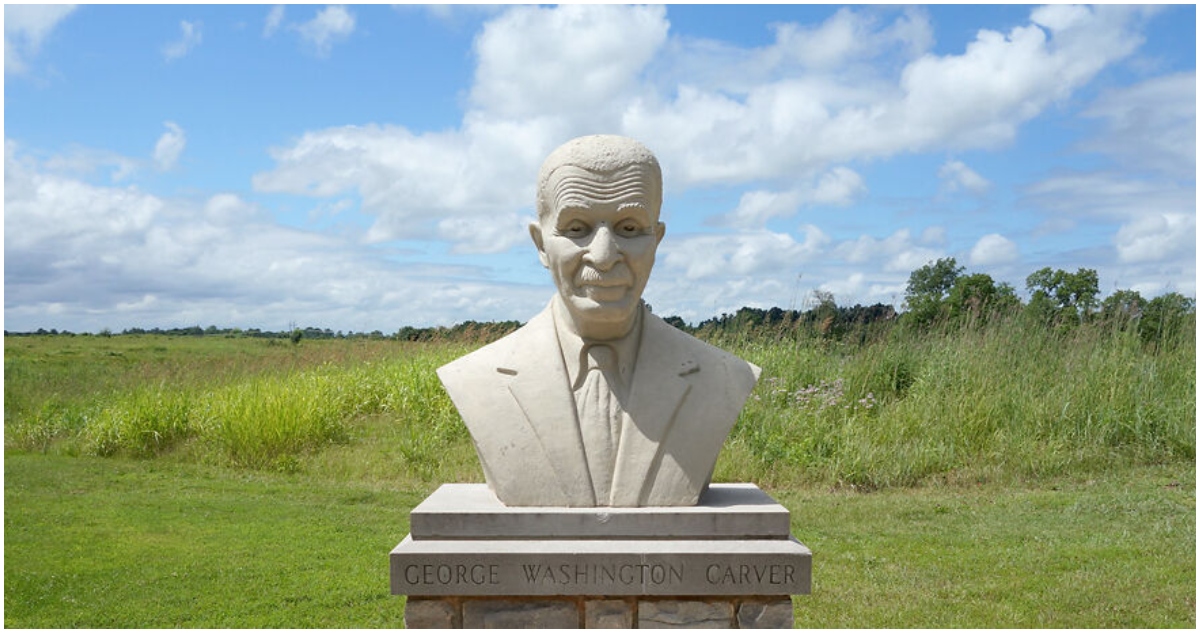The George Washington Carver National Monument, established in 1943 and dedicated in 1953, stands as the first monument to honor an African American and the first dedicated to a non-president. This monument, located in Newton County, Missouri, is a tribute to Carver’s extraordinary achievements as an agricultural scientist, educator, and humanitarian. His legacy continues to inspire generations.
A Monument to Carver’s Impact
Carver’s contributions to agriculture are widely recognized. His work in crop rotation helped poor Black farmers improve their yields and soil quality. By introducing nitrogen-fixing plants such as peanuts and sweet potatoes, he transformed farming practices and improved the livelihoods of many. The George Washington Carver National Monument highlights his achievements and the land where he was born in 1864.
In 1943, just months after his death, Congress passed legislation to create this national monument. The land, a 240-acre farm once owned by Moses Carver, became a powerful symbol of Carver’s contributions to agriculture and his fight for racial equality. Today, it remains a hub for education and reflection on Carver’s life and legacy.
Carver’s Early Life and Education
Born into slavery, George Washington Carver’s early years were shaped by hardship. After the abolition of slavery, he was raised by his former owners, Moses and Susan Carver. Despite facing racial barriers, Carver was passionate about learning. His “curious mind” led him to excel in education, and he eventually earned a master’s degree in agriculture from Iowa State University in 1896.
Carver’s academic journey was remarkable, particularly at a time when education was not easily accessible to Black Americans. His perseverance and passion for learning laid the foundation for his future accomplishments.
Carver’s Agricultural Innovations
Carver’s work in agriculture is one of his most lasting contributions. He is best known for his innovative work with crop rotation, helping farmers grow peanuts, sweet potatoes, and soybeans to improve soil quality. By reducing the reliance on cotton, which depleted the soil, Carver’s methods not only improved farming but also helped to diversify crops and support poor farmers.
In addition to his work on crop rotation, Carver created over 300 products from peanuts, sweet potatoes, and soybeans. These inventions contributed to the economy and improved the lives of countless farmers, particularly in the South. His dedication to improving the lives of Black farmers made him a revered figure in the fight for equality.
The Monument’s Educational Legacy
The George Washington Carver National Monument is not just a tribute to Carver’s life; it serves as an educational tool. Visitors can explore the 240-acre park, which includes the Moses Carver house and the Carver cemetery. The site offers an interactive exhibit area, making it a valuable resource for students and history enthusiasts.
Carver described the monument as “a living museum where history, nature, and education converge.” It has become a place of reflection, offering a glimpse into the environment that shaped Carver’s worldview and inspiring future generations to follow in his footsteps.
Celebrating Diversity Amid Racial Tensions
When the George Washington Carver National Monument was established, it was a significant milestone in a time of racial tension. The monument’s dedication celebrated diversity and helped open the door for more monuments honoring African Americans. It also served as a beacon of hope, showing that the contributions of African Americans could be recognized and celebrated on a national stage.
Today, Carver’s monument continues to stand as a symbol of perseverance, education, and innovation, reminding us of the power of knowledge and the impact of one person’s dedication to improving the world.





